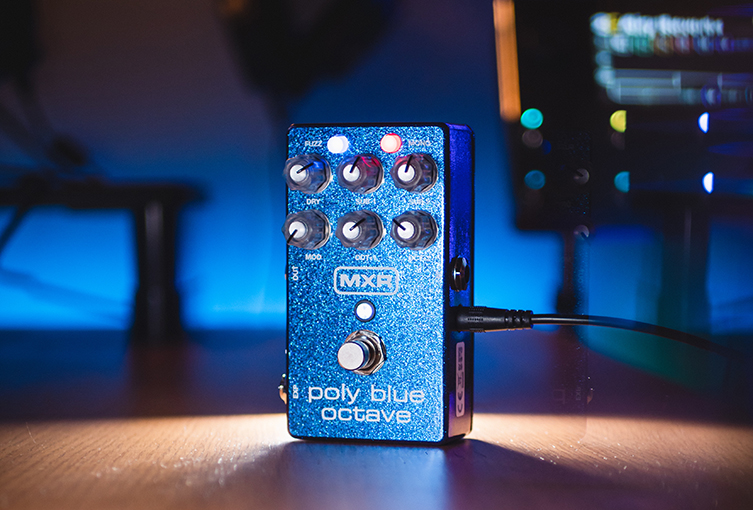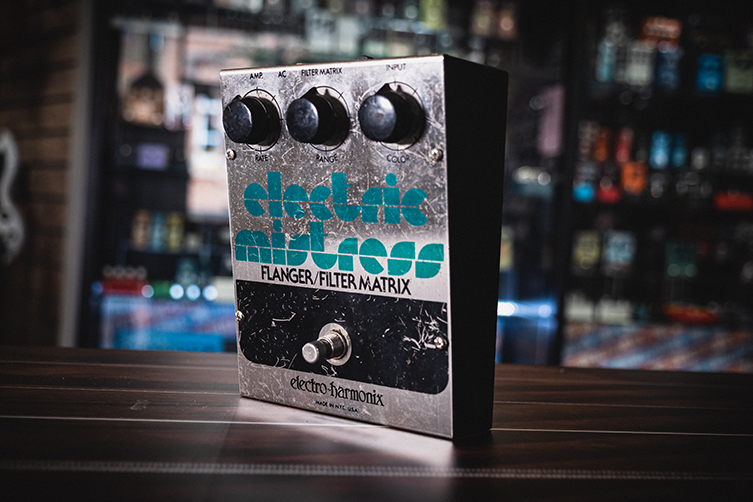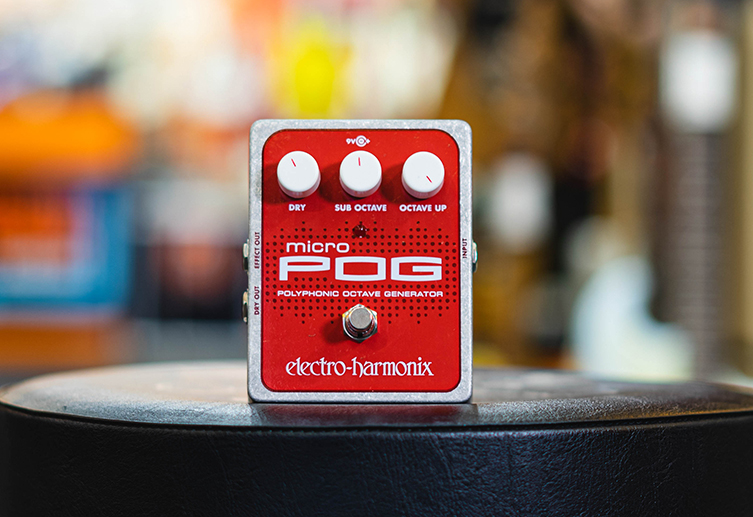Do you love guitar effects pedals? I bet you do: they are creative, fun, expressive and can dramatically change up our guitar sounds. But have you ever thought much about the people behind the pedals? The pioneering pedal builders who made history and created new forms of musical expression with their circuits and soldering?
Today, I’ll introduce you to a few of these people. Some are current builders, and others are historical figures in the world of effects. All of them have played a part in shaping the world of guitar effects as we know it today.

The Pioneers at a Glance
Mike Matthews - Electro-Harmonix
Ikutaro Kakehashi - Roland/BOSS
Jorge Tripps - Way Huge, Line 6, MXR
Robert Keeley - Keeley Effects
Mike Matthews - Electro-Harmonix
Is Mike Matthews the most significant figure in guitar effects? I think there’s a good amount of evidence to support that. Matthews is the founder and head of Electro-Harmonix, or E-HX for short. Born in the Bronx, Matthews is more of a piano and organ player than a guitarist, but that didn’t stop the Cornell graduate from moving into the effects pedal business in the 1960s. Helping a business partner create the Foxey Lady Fuzz in 1967, he drew on his friendship with the pedal’s namesake for inspiration. Indeed, according to Matthews, it was a conversation he had with Hendrix in Jimi’s hotel room (when he still went by Jimmy James) that persuaded Jimi to start singing instead of just playing the guitar!
A year later saw the release of the first E-HX pedal, the LPB-1 Linear Power Booster. The Big Muff Pi followed in ‘69 and was used by everyone from Hendrix to Santana.

The Big Muff put E-HX on the map, but Matthews has proven to be far from a one-trick pony. As well as designing a significant number of the pedals we now regard as classic (Memory Man, Small Stone, Micro Synth, Electric Mistress etc etc), he also invented the first sampling technology! Not so many people know that, but Matthews sold his design to Akai, who then put that into their first MPC units.
Talk about world changing?!!! Electronic and hip hop music would be vastly different without his contributions, not to mention sound design in general.
Today, E-HX pedals are still built in New York City, like they always were. The innovations continue with game-changing pedals like the POG series, and there’s also great stuff like the Soul Food overdrive, which is as ‘Klon’ as you can get, and is under a hundred quid to buy.
Mike Matthews in a word: legend.

Roger Mayer
Roger Mayer is another designer who developed pedals in collaboration with Jimi Hendrix. His Octavia is the original and definitive octave fuzz: when it’s used and approved by the greatest guitarist of them all, you know you’re onto something!
Mayer used to attend Hendrix’s performances and witness his creations being tested in real-time, taking notes and tweaking circuits based on how they performed with Hendrix.
Mayer’s effects are amongst the most copied in the pedal world. He defined certain sounds, and everyone who uses those sounds does so in his honour.
Ikutaro Kakehashi - Roland/BOSS
Imagine a time when there weren’t BOSS compact pedals to plug into? It doesn’t bear thinking, does it? Well, we all owe a collective ‘chorus’ of thanks to the late Ikutaro Kakehashi, another organ player who revolutionised the guitar world.
What is it with these organ players? Am I missing something?

Anyway, Kakehashi started up Roland (the name means nothing: it’s simply a word that is recognisable anywhere in the world) in 1972 after leaving his previous company, Ace Electronics. It’s worth saying that the Ace Tone FM-2 Fuzz Master pedal is exceptional, proving that Kakehashi knew his stuff even pre-Roland!
Anyway, 1977 saw the first of the now-iconic BOSS compact pedals showing up. BOSS is simply Roland’s guitar-specific division, so they aren’t a separate company. The first three BOSS pedal releases were the OD-1 Overdrive, the PH-1 Phaser and the SP-1 Spectrum.
BOSS were the first ever company to bring out a digital delay pedal - the DD-2 - back in 1983. There was no DD-1 to my knowledge! Another first was the world’s first digital reverb pedal with 1987’s RV-2.
BOSS are one of those brands who are always pushing ahead and offering alternatives that are sometimes quite ahead of their time (the Slicer, Guitar synth pedals and Auto Riff effects all come to mind), and that’s all thanks to the innovative example made by their original leader, Ikutaro Kakehashi.
Zachary Vex - ZVEX
Zachary Vex would be here if only for the Fuzz Factory, but his most famous effect isn’t even his most interesting, nor does it explain how significant ZVEX actually are.
So yes, the wild, untameable Fuzz Factory was a bit of a zeitgeist pedal, with everyone clamouring to buy one for their boards and then wondering how the hell to make it sound good. Matt Bellamy is probably responsible for this as much as anyone, but whatever the cause, the ZVEX Fuzz Factory was a huge deal in a number of ways:
- It showed that pedals could absolutely determine a player’s approach to sound
- It showed that people were willing to pay significantly more for hand-made effects
- It proved that there was more to fuzz than simply cloning a Fuzz Face or Big Muff
- It made it clear that effects pedals looked boring and people wanted artwork on them
- It reminded people that being tasteful was often less fun than being ridiculous.
Yes, the boutique pedal market did exist prior to ZVEX: brands like Fulltone and Visual Sound were doing their thing already. But ZVEX - which at the beginning was simply Zachary Vex by himself - single-handedly made the boutique market exciting and desirable to your average guitarist. Everyone suddenly cared about ‘true bypass’, had opinions about certain chips in circuits, and needed hand-screened artwork on the chassis of their pedals. It’s a thing that has never gone away since.
What is also important to know is just how flat-out mental some of the ZVEX designs were/are, whilst retaining a sense of musicality. Take the Fuzz Probe, which I myself owned for a number of years. It’s a Fuzz Factory circuit that’s attached to a big copper treadplate, which acts as a weird expression pedal through conductance. You hover your foot over the pad to control volume and sometimes other parameters. Fun? Definitely. Run-of-the-mill? Far from it.
How about the Seek-Trem? It’s a tremolo effect that works in musical bars, so you can have the pulse in 8ths for one bar, 16ths for the next, none at all for the next, and so on. The cycle repeats and the results is that you get one very unusual and precise stuttering of sound. It’s an analog effect that sounds programmed, and yes, whilst most Line 6 stuff has a copied model of this effect in them these days, let’s credit the maker! The brain that actually thought this up and found a way to make it work is Zachary Vex’s, and he deserves lots of recognition.
Jeorge Tripps - Way Huge, Line 6, MXR
Jeorge Tripps is a kind of mad scientist. His original Way Huge effects were like vintage pedals with their problems sorted: the Swollen Pickle was a Big Muff that didn’t vanish into the background when you switched it on, for example. Latter period Way Huge effects have brought genuinely new approaches to guitar effects into the market. The one that always springs to mind for me is the Atriedes Weirding Module, and that’s not just because I love the Dune reference! The Atreides pedal puts fuzz, filters, EQ and a whole bunch of control at your fingertips via a series of vertical sliders. It’s like an angry synth, or it’s like a funk odyssey, depending on how you set it up.

But it’s not just the amazing Way Huge stuff that Tripps is known for. It’s not massively shouted about, but Tripps spent a lot of time at Line 6 too, and was actually very hands-on in the design of the immortal DL-4 Delay pedal!
Who doesn’t love that pedal?
Tripps has continued to work within the realm of the Dunlop-owned brands, who bought Way Huge and also own MXR. Wild designs like the Poly Blue Octave? Yup, Tripps. What a guy.
Click the button below to read an interview I had with Jeorge a few years back.
Click to Read an EXCLUSIVE Interview with Jeorge Tripps!
Robert Keeley - Keeley Effects
Robert Keeley is a master pedal maker without doubt. His compressor pedals, initially known simply as ‘2 knob’ or ‘4 knob’ depending on their level of control, are about as famous as compressor pedals will ever get. They are the special sauce in so many pro pedal boards out there. When it’s right, it’s just right.
And when it’s not right, Robert Keeley can fix it! My own introduction to the brand as a salesman was with the ‘Keeley mods’: a collection of famous pedals like the Ibanez TS9, the BOSS DS-1 and the BOSS MT-2, which were modified from their original state. Keeley had taken the pedals apart, changed interior parts and modified the circuitry in various ways to improve what he saw as, I suppose, wasted potential. It’s all subjective for sure, but my own ears told me that the MT-2 Twilight Zone mod was night-and-day different from the standard release.
The point is, both were available if you wanted them. If you could acknowledge a difference - and wanted that difference - then the modded ones were there, with stickered logos and a trademark bright blue LED status light. That practice proved too time-consuming and expensive for Keeley to continue with, so they no longer do it, but Keeley is on today’s list for bringing that element of the culture to a mass market. Modding is a huge subject, and Keeley is an inspirational figure in that realm.
Unsung Heroes
We regularly salute the musicians who bring us incredible music, but we hear less about the creative individuals who build the equipment for those sounds. Without these developments, we’d still be listening to stuff that sounds like Buddy Holly!
I hope today’s blog has shone a little light on some of these backroom geniuses, and might even inspire you to research some of the people who’ve built your own favourite pedals!

Click to View our Effects Pedals

